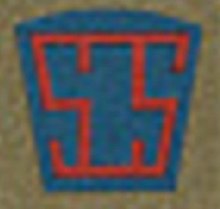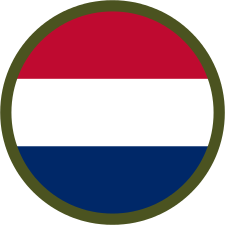
The American Expeditionary Forces (AEF) was a formation of the United States Armed Forces on the Western Front during World War I, comprised mostly of units from the U.S. Army. The AEF was established on July 5, 1917, in France under the command of then-Major General John J. Pershing. It fought alongside French Army, British Army, Canadian Army, British Indian Army, New Zealand Army and Australian Army units against the Imperial German Army. A small number of AEF troops also fought alongside Italian Army units in 1918 against the Austro-Hungarian Army. The AEF helped the French Army on the Western Front during the Aisne Offensive in the summer of 1918, and fought its major actions in the Battle of Saint-Mihiel and the Meuse-Argonne Offensive in the latter part of 1918.

The 78th Training Division (Operations) ("Lightning") is a unit of the United States Army which served in World War I and World War II as the 78th Infantry Division, and currently trains and evaluates units of the United States Army Reserve for deployment.

The 87th Infantry Division was a unit of the United States Army in World War I and World War II.
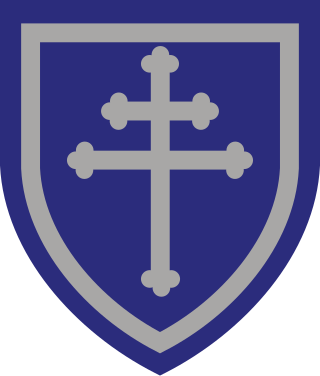
The 79th Infantry Division was an infantry formation of the United States Army Reserve in World Wars I and II.

The 92nd Infantry Division was an African-American, later mixed, infantry division of the United States Army that served in World War I, World War II, and the Korean War. The military was racially segregated during the World Wars. The division was organized in October 1917, after the U.S. entry into World War I, at Camp Funston, Kansas, with African-American soldiers from all states. In 1918, before leaving for France, the American buffalo was selected as the divisional insignia due to the "Buffalo Soldiers" nickname, given to African-American cavalrymen in the 19th century. The divisional nickname, "Buffalo Soldiers Division", was inherited from the 366th Infantry, one of the first units organized in the division.
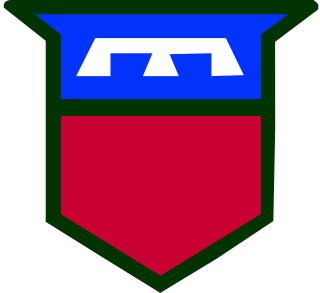
The 76th Infantry Division was a unit of the United States Army in World War I, World War II and the Cold War. The division was inactivated in 1996 and has been reconstituted as the 76th US Army Reserve Operational Response Command in 2013.
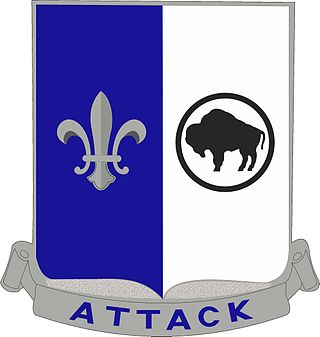
The 371st Infantry Regiment was a segregated African American regiment, nominally a part of the 93rd Division, that served in World War I under French Army command, and also in World War II in the Italian Campaign as part of the 92nd Infantry Division (Colored).
The 366th Infantry Regiment was an all African American (segregated) unit of the United States Army that served in both World War I and World War II. In the latter war, the unit was exceptional for having all black officers as well as troops. The U.S. military did not desegregate until after World War II. During the war, for most of the segregated units, all field grade and most of the company grade officers were white.
The 5th Brigade, 78th Division was an AC/RC unit based at Joint Base McGuire–Dix–Lakehurst, New Jersey. The unit was responsible for training selected United States Army Reserve and National Guard units along the East coast. The brigade was a subordinate unit of First Army Division East, First United States Army when it was inactivated in 2006.
Camp Patrick Henry is a decommissioned United States Army base which was located in Warwick County, Virginia. After World War II, the site was redeveloped as a commercial airport, and became part of City of Newport News in 1958 when the former City of Warwick and Newport News were politically consolidated as a single independent city. The airport is known in modern times as Newport News/Williamsburg International Airport.
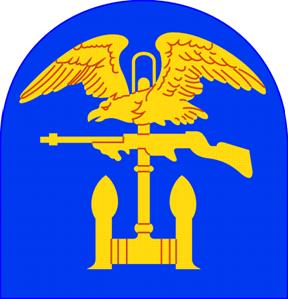
The Engineer Special Brigades were brigade-sized amphibious forces of the United States Army developed during World War II and active from 1942 to 1955. Initially designated engineer amphibian brigades, they were redesignated engineer special brigades in 1943. The 1st, 5th, and 6th Engineer Special Brigades were assigned to the European Theater of Operations. The 1st Engineer Special Brigade participated in the landings in Sicily and Italy before joining the 5th and 6th Engineer Special Brigades for the invasion of Normandy.
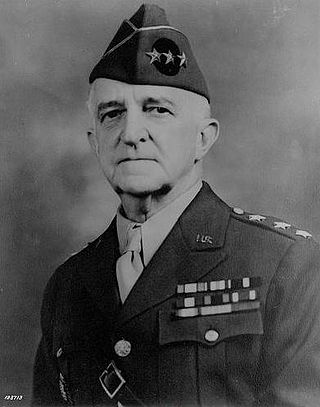
Daniel Van Voorhis was a United States Army lieutenant general and was noteworthy for his assignments as commander of V Corps and the Caribbean Defense Command, as well as his efforts in creating the Army's modern armor branch.
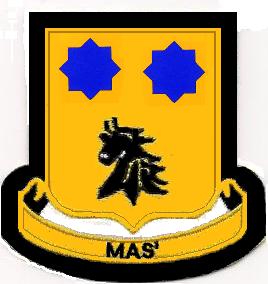
The 28th Cavalry Regiment (Horse) (Colored) was a short-lived African American unit of the United States Army. The 28th Cavalry was the last horse-mounted cavalry regiment formed by the U.S. Army. The regiment was formed as part of the 2nd Cavalry Division in 1943 and inactivated in North Africa in 1944 without seeing combat.

The 324th Infantry Regiment was an infantry regiment of the United States Army first organized in August 1917 as part of the 81st Division, National Army. The 324th Infantry saw combat in the defense of the St. Die sector of Lorraine, and later took part in the closing stages of the Meuse-Argonne offensive of the First World War. The 324th Infantry was demobilized in June 1919, and subsequently reconstituted in the Organized Reserves in 1921, as part of the 81st Division. In 1942, the 324th Infantry was relieved from assignment to the 81st Division, allotted to the Army of the United States, and assigned to the 44th Infantry Division, a unit which fought as part of the 7th Army in France and Germany during World War II.

The 12th Port of Embarkation, later designated 377th Theater Sustainment Command, was constituted on 2 July 1942 and was activated 5 July 1942 at Fort Dix, New Jersey. The unit was converted, reorganized, and redesignated 7 November 1942 as the 12th Port. The unit was inactivated 4 January 1946 at Camp Kilmer, New Jersey and later redesignated 3 November 1948 in New Orleans, Louisiana, as the 377th Transportation Major Port. On 11 September 1950 the 377th was called to Camp Kilmer, New Jersey. Later, the unit moved to Fort Eustis, Virginia and stayed on active Federal Service until 10 October 1952. From 1953 until 1963, the 377th remained in a Reserve status and experienced several changes in unit designation.

The Services of Supply was the support chain of the American Expeditionary Forces in France, England, Italy and the Netherlands during World War I. It was disbanded on August 31, 1919, in France.
The 50th Coast Artillery Regiment was a Coast Artillery Corps regiment in the Regular Army. It was mobilized in World War I and World War II.
The 338th Infantry Regiment was a National Army Infantry Regiment first organized for service in World War I as part of the 85th Infantry Division in Europe. It later served in the Mediterranean Theater during World War II. Since then it has served as a training regiment, training Army Reserve and Army National Guard soldiers for overseas service after the September 11 terrorist attacks.
The 49th Coast Artillery Regiment was a Coast Artillery Corps regiment in the Regular Army. It was mobilized in World War I, with the searchlight battery mobilized in World War II.

Railway operations were originally established by the United States Army to provide support to France and Great Britain after the United States entered World War I. The Army organized and deployed different types of railway regiments and battalions. As operations progressed, the railway units were used to support the American Expeditionary Forces as well. U.S. rail regiments moved both troops and supplies for the AEF and for the allies from the seaports to the front.
